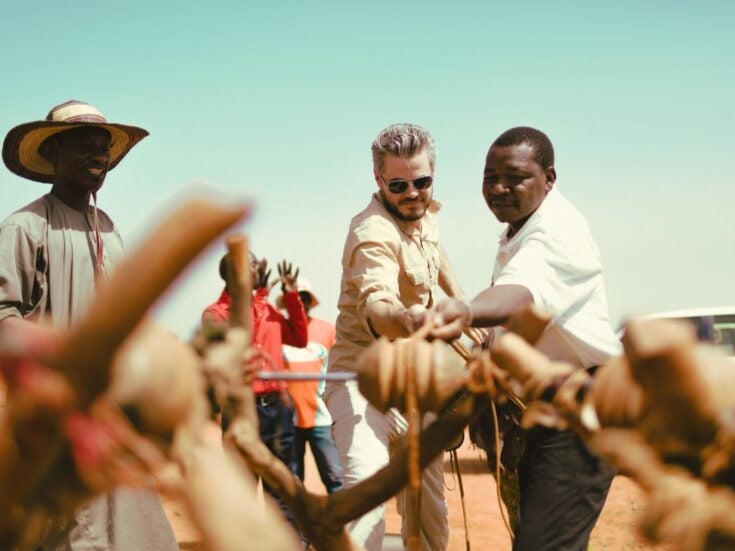
THE PUBLIC ESTABLISHMENT OF THE PALACE, MUSEUM, AND NATIONAL ESTATE OF VERSAILLES AND FONDATION PHILANTHROPIA ANNOUNCE A MAJOR PARTNERSHIP FOR THE PRESERVATION OF CULTURAL HERITAGE AND THE TRANSMISSION OF SKILLS AND EXPERTISE.
Catherine Pégard, President of the Public Establishment of the Palace, Museum, and National Estate of Versailles, describes her reaction on taking up her role at Versailles: “As soon as I arrived here, I saw that the Latona Fountain was highly damaged and wanted to reinstate it to its former splendor. Restoring the masterpiece of the gardens that André Le Nôtre designed is the finest homage we can pay him, as we prepare to celebrate the 400th anniversary of his birth in 2013. Thanks to Fondation Philanthropia, we can also pay tribute to the artisans and craftsmen who keep alive the link of excellence between the past and the present.
“Fondation Philanthropia has committed itself to the restoration of the Latona Fountain because transmitting heritage lies at the heart of our mission. At Versailles, this heritage not only takes the shape of an architectural masterpiece; it is also reflected in the immense wealth of expertise and skill embodied by the artisans and craftsmen involved in its restoration,” commented Thierry Lombard, President of Fondation Philanthropia and Managing Partner of Lombard Odier & Cie.
A commitment to preserving heritage: the restoration of the Latona Fountain and the Latona Parterres
The Latona Fountain, with its marble tiers, rich lead and sculpted marble decoration, and intricate water features, is probably the most famous masterpiece in the gardens of Versailles. Located in the centre of the east-west Grand Perspective, it marks the start of the Royal Walk leading to the Apollo Fountain. It is the lynchpin of the hydraulic system of the park of Versailles: the water collected in its underground galleries supplies the other fountains of the park.
Today, over three centuries after it was built, its restoration has become imperative. Work is urgently needed on its infrastructure, hydraulics and sculpted decorations. The deterioration, notably of the rim stones, has affected the overall stability of the structure and the waterproofing of the basin. The sculptures and the marble features are in a state of grave disrepair. The internal and external hydraulic system has also suffered a great deal of damage, and this has contributed to the current malfunctioning of the garden’s overall hydraulic system.
The work, which will begin in early November 2012 and run for 16 months, will be carried out in accordance with ancient techniques by numerous artisans, master craftsmen and engineers. In parallel, an educational exhibition will be organized to inform the general public and showcase the techniques and skills of the period.
By regenerating the appearance of the Latona Parterres, Fondation Philanthropia is helping restore the gardens to the original design of the “King’s gardener”. And the restoration coincides with the 400th anniversary of the birth of André Le Nôtre, which is being celebrated in 2013.
A mission to transmit expertise: support for training in arts and crafts for the preservation of exceptional forms of know-how
This initiative will promote a number of unique and fragile forms of expertise and encourage future generations to acquire them. It will also incentivize young artisans in their careers and in the pursuit of excellence. It stems from Fondation Philanthropia’s desire to secure a place for arts and crafts, such as gilding, woodworking, embroidery and marble and metal work, in both the present and the future. To safeguard the future of these crafts, which are an integral part of our intangible heritage, it is vital that they are passed on to younger generations. Fondation Philanthropia is keen to support a new crop of young talents with the ability to perpetuate these arts and crafts, and in the process help them find employment.






